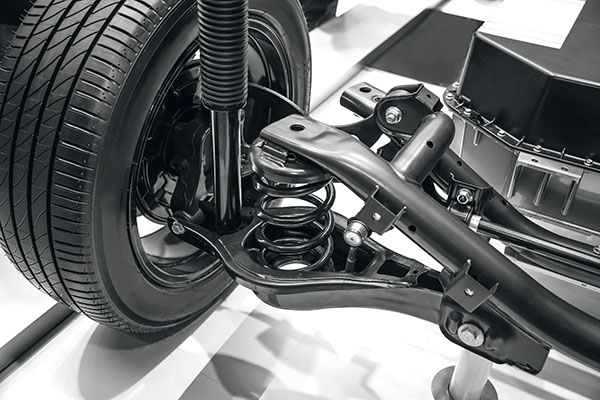
Imagine gliding down a winding road, the gentle hum of your tires on the pavement, and the feeling of effortless control as your car gracefully navigates each curve. Behind this harmonious experience is a marvel of engineering - your vehicle's suspension system. It's the hero lurking in the shadows that ensures your ride remains comfortable and your tires stay firmly planted on the road.
Join us on a journey through the intricate web of shocks, struts, and everything else that makes your suspension system work as well as it does.
The Key Components of a Suspension System and Their Functions
Springs
Springs are the backbone of your suspension system. They absorb shocks and bumps, maintaining tire contact with the road. Coil springs and leaf springs are common types used in vehicles.
Shock Absorbers (Dampers)
Shock absorbers, often simply called shocks, work in tandem with springs to control the rebound and oscillation of the springs. They ensure your ride remains smooth and stable by dissipating kinetic energy.
Struts
Struts are a structural part of the suspension system and serve multiple functions. They provide support to the vehicle's weight, house the spring and shock absorber, and help maintain wheel alignment.
Control Arms
Control arms connect the wheels to the frame or body of the vehicle. They enable the wheels to move up and down while controlling their lateral movement.
Sway Bar (Stabilizer Bar)
Sway bars reduce body roll during cornering. They connect the suspension components on each side of the vehicle, distributing force and enhancing stability.
Bushings
Bushings are small but critical components that dampen vibrations and reduce noise. They are found in various parts of the suspension system, including control arms and sway bars.
Ball Joints
Ball joints allow the suspension components to pivot and move. They connect the control arms to the steering knuckles and are essential for steering and control.
Tie Rods
Tie rods connect the steering system to the wheels. They play a crucial role in steering responsiveness and maintaining wheel alignment.
How Do All These Components Work Together
Imagine your suspension system as an orchestra. Springs are like the foundation, providing the base notes. Shocks and struts act as the conductors, ensuring a harmonious flow of energy. Control arms, sway bars, and bushings are like skilled musicians playing their parts to perfection. Ball joints and tie rods are the soloists, delivering precision and control.
As you drive, this symphony comes to life. When you encounter a bump or take a turn, the springs absorb the impact. Shocks and struts control the bouncing, ensuring a smooth ride. Control arms and sway bars keep the wheels in line while bushings and ball joints dampen vibrations. Tie rods translate your steering input into precise wheel movement.
Maintenance is Key!
With all these components and a few others we didn't mention, maintaining them is quite important. But now the question arises - "Where should I service my suspension system?" The answer is simple: simply book an appointment with us at Spectrum Car Care and experience the difference our mechanics bring!